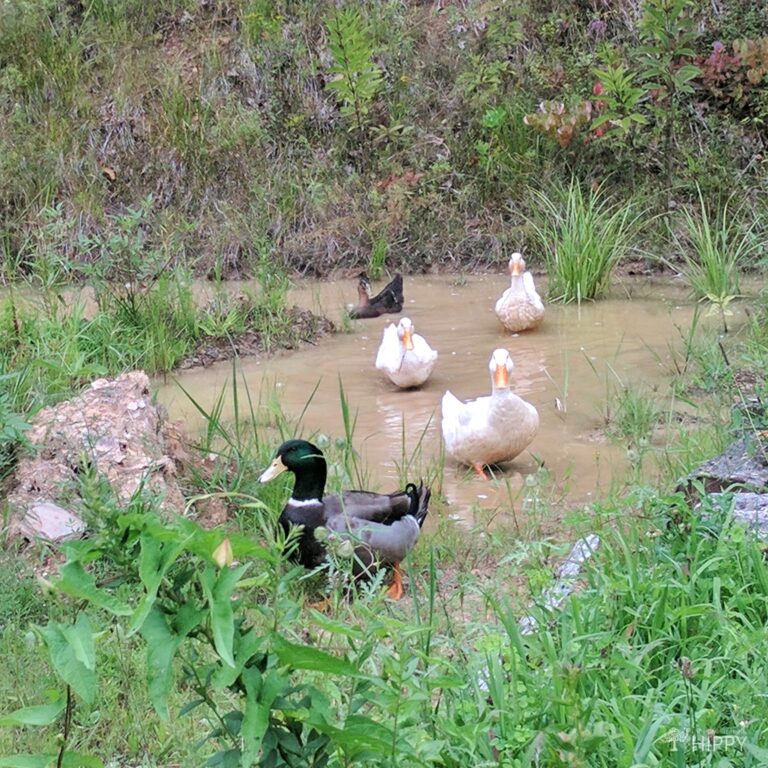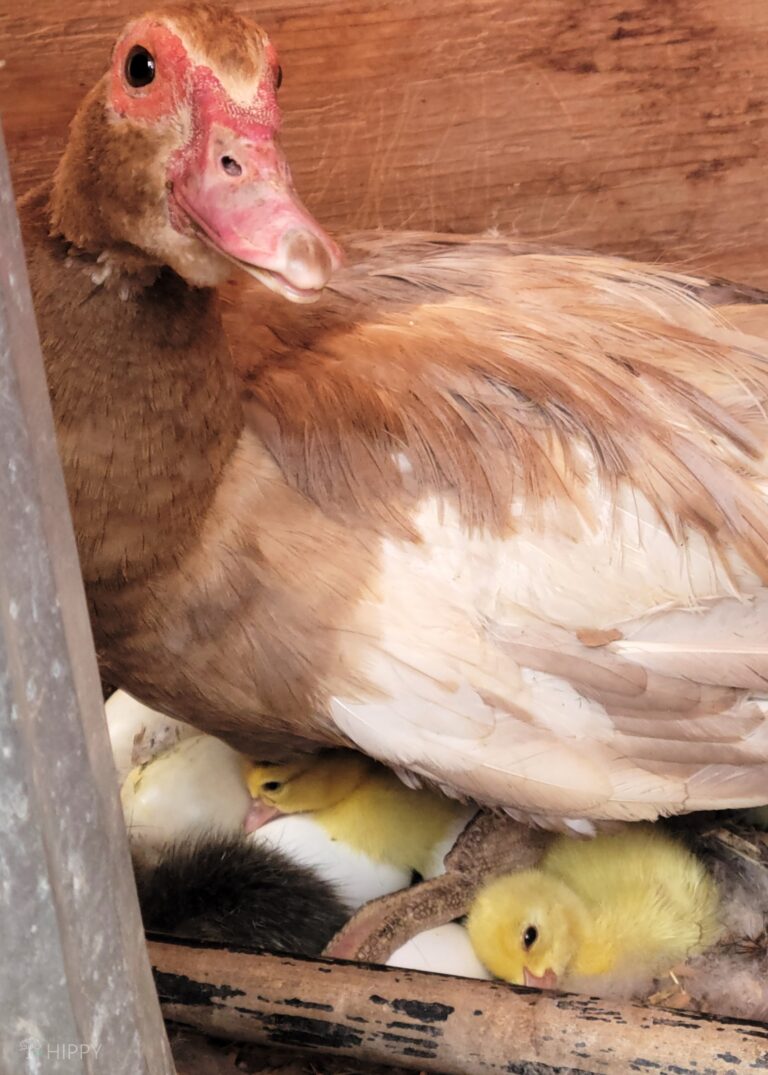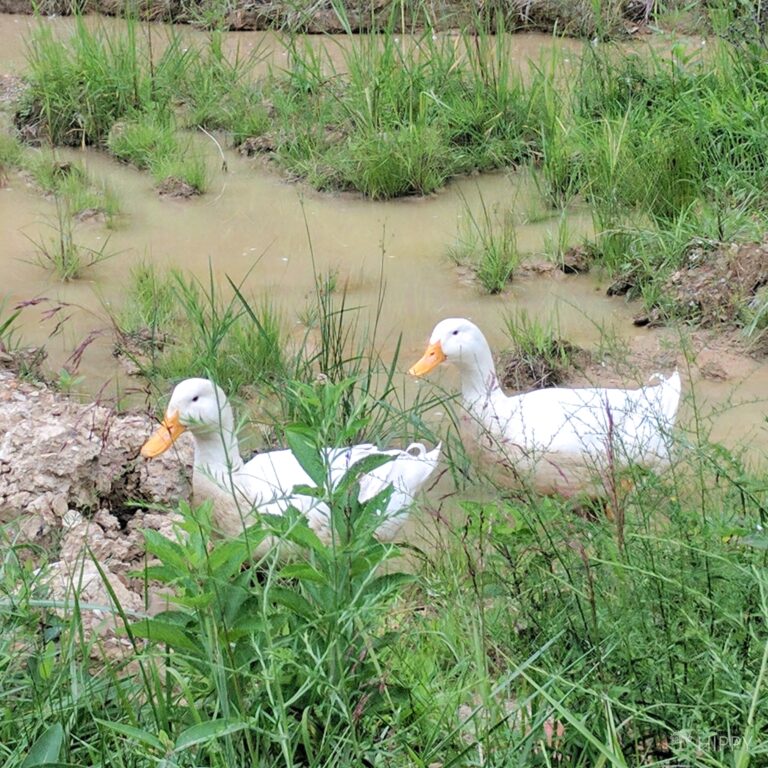Ducks have been domesticated for ages just like chickens have, but they are making a strong comeback in popularity these days with renewed interest in self-sufficiency.

Compared to chickens, ducks are larger as a rule, and many are still very prolific layers. Ducks also tend to be a good bit healthier overall, meaning they are easier to care for.
Whether you’re raising them as a business or you just want to keep yourself supplied, duck meat is something of an acquired taste but truly delicious and very nutritious.
And just like how some breeds of chicken are renowned for the quality and quantity of meat they produce, so too are there famous meat breeds among ducks. Keep reading and I’ll tell you about 7 of the best…
Aylesbury
One of the most famous and, tragically, most threatened meat breeds among ducks today, the Aylesbury is legendary for a good reason.
Their meat is of incredible quality, very fine-grained, flavorful, and sweet. Adult ducks weigh about 10 pounds, plus or minus a pound, and reach a good weight for slaughter in anywhere from 7 to 9 weeks.
They also happen to be excellent foragers and on bountiful land can take care of nearly all of their nutritional requirements by themselves.
Sadly, the population of Aylesbury ducks was devastated during World War I and then almost finished off entirely in the aftermath of World War II. They’re still around, but extremely rare outside of the UK, and even there they are threatened.
You’ll have to look far and wide if you want to get some of your own, and even then, sustaining your flock will be very difficult: preventing inbreeding problems with successive generations will be a challenging and ongoing endeavor on its own.
They’re also only so-so sitters and mothers, meaning you’ll need to incubate and raise ducklings yourself to stand any chance of expanding your flock.

Muscovy
The Muscovy, also known as the Barbary, duck is native to Central and South America and exists as a wild breed and also as a domestic breed.
Don’t worry; unlike so many harvested wild specimens, domestic Muscovies do not taste gamey or funky.
They can, however, still produce a whole lot of meat for your table, with adult drakes weighing anywhere from 10 to 15 pounds, they are terrific birds for roasting whole. Note that hens are quite a bit lighter, maxing out at around 8 pounds.
Their meat is also famously lean and flavorful compared to some other breeds which are often compared, unfavorably, to chicken.
A fun fact about Muscovies is they don’t quack: they are not truly quiet, though, as instead, they make an ominous, rumbly hissing sound! Muscovies are much more common than Aylesbury ducks above and one of the most popular around for meat, but they don’t lay many eggs and aren’t great sitters. If you want a dual-purpose breed, look elsewhere…
Moulard
Sometimes called a Magret or Mule duck, the Moulard is the single most popular meat breed in much of the world, specifically in France and other parts of Europe along with Canada.
Though still very popular in the US, they are in second place right behind the Pekin found next on our list. Moulards are known for producing thick and intensely flavorful cuts of meat with a wonderful amount of surface fat. It practically bastes itself however you’re preparing it!
Truly, there’s a whole lot to like about the Moulard as a meat breed but meat is all you’re going to get: these ducks are sterile hybrids produced by the forced breeding of Muscovy drakes and Pekin hens.
These ducks will never reproduce more of their own kind, so keeping yourself in a supply of Moulards is something of a logistical skill set unto itself.
It is, though, easily managed by anyone experienced with caring for and breeding ducks. Do be sure to separate Moulard ducklings as soon as you can!

Pekin
First arriving in the US from China, the Pekin (sometimes Peking) duck has the distinction of being the single most popular meat variety here in America and is the go-to breed for commercial production.
But aside from meat, they’re also popular for their eggs; they are reliable and prolific layers, cranking out up to 300 very large eggs yearly.
These big ducks also grow extremely quickly, and are usually harvested at about 6 or so pounds when they hit six weeks of age. They’re sometimes harvested when they are much bigger at about 10 ½ pounds at 12 weeks, and often referred to as “Jumbo Pekin” accordingly.
Their meat is notable for being very mild and quite fatty, which is a turn-off to some looking for a more flavorful cut but the abundant fat is itself easily rendered and wonderful and all kinds of other recipes.
Pekins are also great foragers and can take care of themselves for the most part on a large parcel with lots of agreeable food sources.
Now, if you want to expand your flock naturally, it’s best to give up on that right now: Pekins are among the worst mothers out of all domestic ducks and are notorious for breaking their own eggs. Be prepared to incubate!
Appleyard
The Appleyard, sometimes called the Silver Appleyard, is a breed that is rightly famous for the quality of its meat, and perplexingly its popularity among homesteaders and backyard owners is diminishing somewhat recently.
Nonetheless, it’s still a great choice for most of us because it grows quickly, is remarkably healthy, and is ready to harvest at around 7 pounds in just 9 weeks. These ducks are more than capable of keeping even a large family in delicious meat year in and year out.
Even better, the Appleyard is an inspired choice for a dual-purpose breed with hens laying anywhere from 200 to 270 eggs per year.
While that’s hardly record-beating among domestic breeds, a small flock will certainly produce many more eggs than you know what to do with. And they will do so with boring regularity and reliability!
If you want ducks that are healthy, hardy, delicious, and capable egg-layers, I strongly urge you to give the Appleyard a serious look.
Saxony
A meat breed that is indigenous to Germany, the Saxony duck has something of an unfortunate reputation for no good reason these days, and is accordingly rare in the US though the duck is not particularly endangered on a global scale.
In the aftermath of World War II, Germany and all German products were, understandably or not, shunned and so these ducks did not really proliferate beyond their homeland. And that’s a shame!
Growing large, heavy-bodied, and producing dense, thick cuts of savory, flavorful meat, your average Saxony duck will top out at about 8 pounds or a little bit more.
This makes them tremendous providers of meat, and for a backyard or small-scale owner, they are also capable egg producers, with most hens cranking out around 100 a year.
Hardly competitive on a commercial scale, no, but a small flock will still keep even a large family stocked to the rafters with eggs.
Even better, these ducks are quite healthy as a rule, showing high levels of vitality and excellent foraging capability. This makes them an especially great choice for folks who want a more self-sufficient flock.
Rouen
A breed hailing from the United Kingdom, (yes, the UK; not France as the name might suggest) the Rouen is famous for its very large size and supremely flavorful, succulent meat that is almost perfectly balanced with fat content.
Today, they’re mostly kept as a heritage breed and showbird, but for backyard keepers and homesteaders they still have excellent utility for meat production…
They are quite healthy, good foragers, and can top out at a whopping 10 pounds in the case of drakes, meaning you’ll get more meat per harvest than other breeds.
However, it’s not all good news, as Rouens grow slowly and it usually takes an extra 2 weeks, sometimes 3, for them to reach a suitable size for slaughter.
They’re also low output layers, with most females laying only a few dozen eggs per year- rarely more than 40. They are, however, good sitters and diligent parents.
Combined with their calm, stoic attitudes this can make them wonderful backyard ducks when you consider the cost-benefit analysis.

Tom has built and remodeled homes, generated his own electricity, grown his own food and more, all in quest of remaining as independent of society as possible. Now he shares his experiences and hard-earned lessons with readers around the country.
Find out more about the team here.
